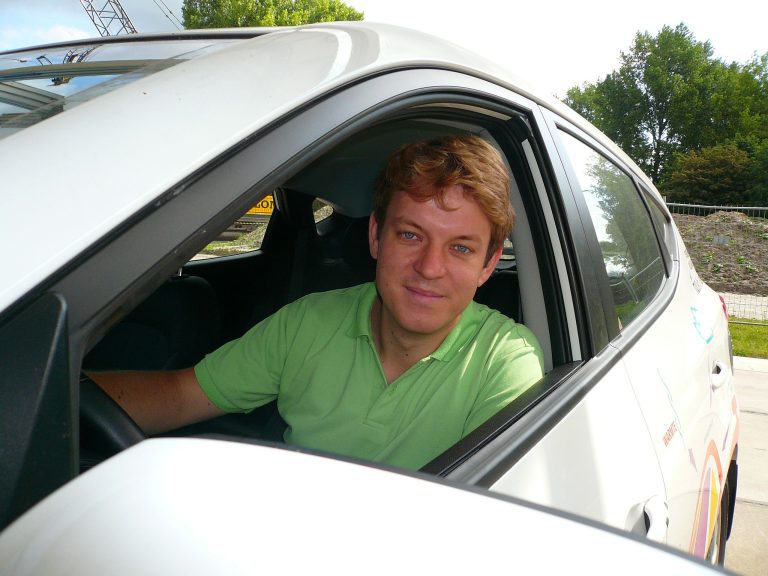Can fuel cells in cars help stabilise the electricity grid when more sun and wind energy makes it harder to maintain the balance between production and demand?
The large Hyundai moves silently over the pavement towards the power station. PhD student Vincent Oldenbroek puts the automatic gear into ‘park’, gets out an electric cable and connects the car to the station. It seems like an ordinary 21st-century scene. But what makes the situation unique is that power is not flowing to the car to charge its batteries. Instead, the car delivers power to the grid.
Fuel cell cars are real. This Hyundai was the first; Toyota and Honda are following right behind. These cars run on hydrogen that is converted directly into electricity by a fuel cell with clean water and a little heat as the only by-products. The 140-litre tanks contain a maximum of 5.6 kilograms of hydrogen gas at 700 bars. The range is therefore about 500 kilometres. The maximum power is 100 kilowatts, but at the power station, it idles at 10 kW. That’s still enough for powering 5-10 households (and more if they have solar panels).
 Mobile power plants
Mobile power plantsMobile power plants
It’s a long-time vision from Professor Ad van Wijk that fuel cell cars may be used to deliver electricity to the grid. The need for additional capacity that can be deployed rapidly has grown with the share of renewable energy on the grid. If for example, the production of a wind park falls short of the prediction, reserve capacity is needed to maintain balance on the grid. Recent studies by the European Climate Foundation show that the need for backup plants roughly doubles in an entirely renewable energy system by 2050. So rather than building new stationary power plants, couldn’t we use the mobile power from fuel cells in hydrogen cars instead?
Oldenbroek, who returned from a career in oil and gas engineering to TU Delft to do his PhD project on sustainable energy, is one of four PhD students to study the feasibility of the plan. He explores questions such as: How much balancing power do you need in a sustainable energy system? How many cars does stabilisation require? What are the consequences for the fuel cell if it remains permanently switched on? What kind of load is best for the fuel cell?
 PhD projects
PhD projectsPhD projects
Oldenbroek is studying the concept on three levels in future technology scenarios. On the national level, he wants to make an educated estimate on how many fuel cell cars would be needed to stabilise a national grid, assuming that the cars are parked 95% of the time. On a local scale, he studies the scenario of a hospital using fuel cell cars in the car park as backup power instead of the diesel generators they now have. For 3 megawatt peak power, about 300 cars running on 10% of their maximum power would suffice. Finally, he also studies the behaviour of hydrogen fuel cells in action to predict the consequences for the lifetime of the device.
Other researchers in the Car as Power Plant (CaPP) project are: Dr. Reinier van der Veen at the TPM faculty who studies business models that make it attractive for car owners to participate. PhD student Esther Park Lee, also at TPM, explores effective incentives and organisational structures to involve car owners. PhD student Farid Alavi at 3mE develops a robust control of CaPP smart energy systems. The PhD students aim to finish their projects by the end of 2018.


Comments are closed.